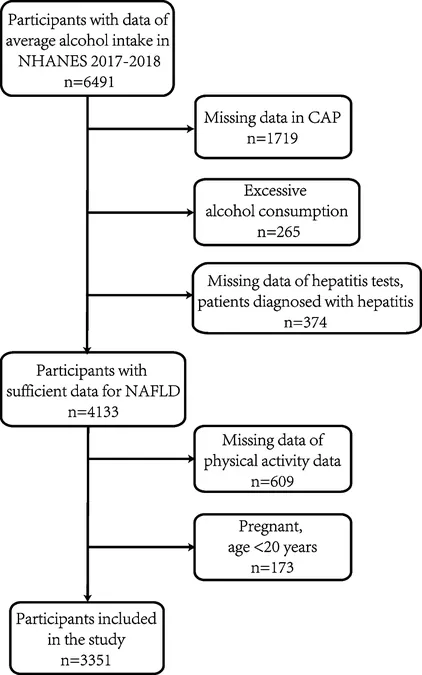
The Hidden Link Between Metabolic Syndrome, Sedentary Lifestyles, and Non-Alcoholic Fatty Liver Disease: What You Need to Know!
2025-05-06
Author: Li
A Rising Epidemic: Understanding NAFLD
Non-alcoholic fatty liver disease (NAFLD) is becoming alarmingly common, with approximately 30% of adults globally affected. This silent disease, primarily linked to obesity, is rapidly emerging as a main cause of chronic liver issues, even leading to severe conditions like hepatocellular carcinoma (HCC) without any prior cirrhosis. Unfortunately, as obesity rates rise, so does the prevalence of NAFLD—striking a staggering 70% among the overweight population.
The Role of Metabolic Syndrome
Understanding metabolic syndrome (MetS) is crucial in combating this health crisis. This cluster of conditions—including obesity, high blood sugar, and abnormal cholesterol levels—does not just contribute to heart disease but is also a primary driver of NAFLD. An alarming 35% of U.S. adults are affected by MetS, with numbers climbing yearly.
Sedentary Lifestyle: The Unseen Killer
Evidence increasingly shows that a sedentary lifestyle is a significant risk factor for both MetS and NAFLD. Physical activity is essential for managing weight and improving insulin sensitivity. A nationwide survey revealed that while more Americans are becoming aware of healthy habits, many still struggle to break free from a sedentary lifestyle, which has only worsened over time.
The Power of Movement: Mediating Factors
Recent research conducted on the American population examined how physical activity (PA) and sedentary behavior (SB) interact with MetS in relation to NAFLD. The findings revealed that while exercise is protective, sedentary habits can exacerbate health issues. For instance, engaging in regular recreational activities correlates with a reduced risk of NAFLD, whereas prolonged sedentary behaviors intensify the likelihood of developing MetS.
Recreational Activities vs. Sedentary Choices
Interestingly, it was found that recreational activities—like swimming and cycling—were more effective than work-related physical tasks in reducing NAFLD risks. This could be due to the structured and intense nature of recreational exercise, which significantly enhances insulin sensitivity and metabolic health.
Why You Should Care
In battling NAFLD, it's crucial to recognize that not all physical activities measure up equally. Especially noteworthy is the stronger effect of recreational activities, which counteract the risks posed by sedentary behaviors. Lack of movement can lead to higher insulin resistance, thus fueling metabolic disorders. Regular engagement in physical fitness—paired with efforts to diminish sedentary time—could dramatically enhance overall metabolic health.
Summary of Key Findings
1. NAFLD is a growing public health crisis linked to obesity and MetS. 2. Sedentary lifestyles significantly contribute to MetS and increase NAFLD risk. 3. Regular recreational activity offers a protective effect against NAFLD. 4. Strategies for reducing sedentary behavior should be prioritized.
Next Steps for a Healthier You
If you're looking to lower your risk of NAFLD or improve your overall health, consider integrating more recreational activities into your routine. Prioritizing movement and finding enjoyable ways to stay active can create lasting changes, vastly improving both your physical and mental well-being.


 Brasil (PT)
Brasil (PT)
 Canada (EN)
Canada (EN)
 Chile (ES)
Chile (ES)
 Česko (CS)
Česko (CS)
 대한민국 (KO)
대한민국 (KO)
 España (ES)
España (ES)
 France (FR)
France (FR)
 Hong Kong (EN)
Hong Kong (EN)
 Italia (IT)
Italia (IT)
 日本 (JA)
日本 (JA)
 Magyarország (HU)
Magyarország (HU)
 Norge (NO)
Norge (NO)
 Polska (PL)
Polska (PL)
 Schweiz (DE)
Schweiz (DE)
 Singapore (EN)
Singapore (EN)
 Sverige (SV)
Sverige (SV)
 Suomi (FI)
Suomi (FI)
 Türkiye (TR)
Türkiye (TR)
 الإمارات العربية المتحدة (AR)
الإمارات العربية المتحدة (AR)